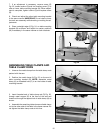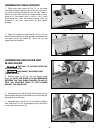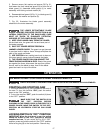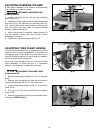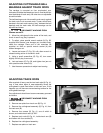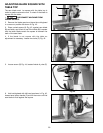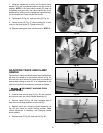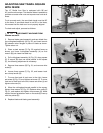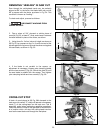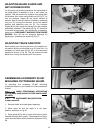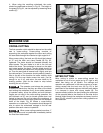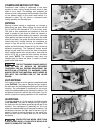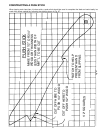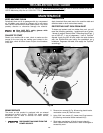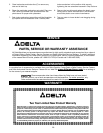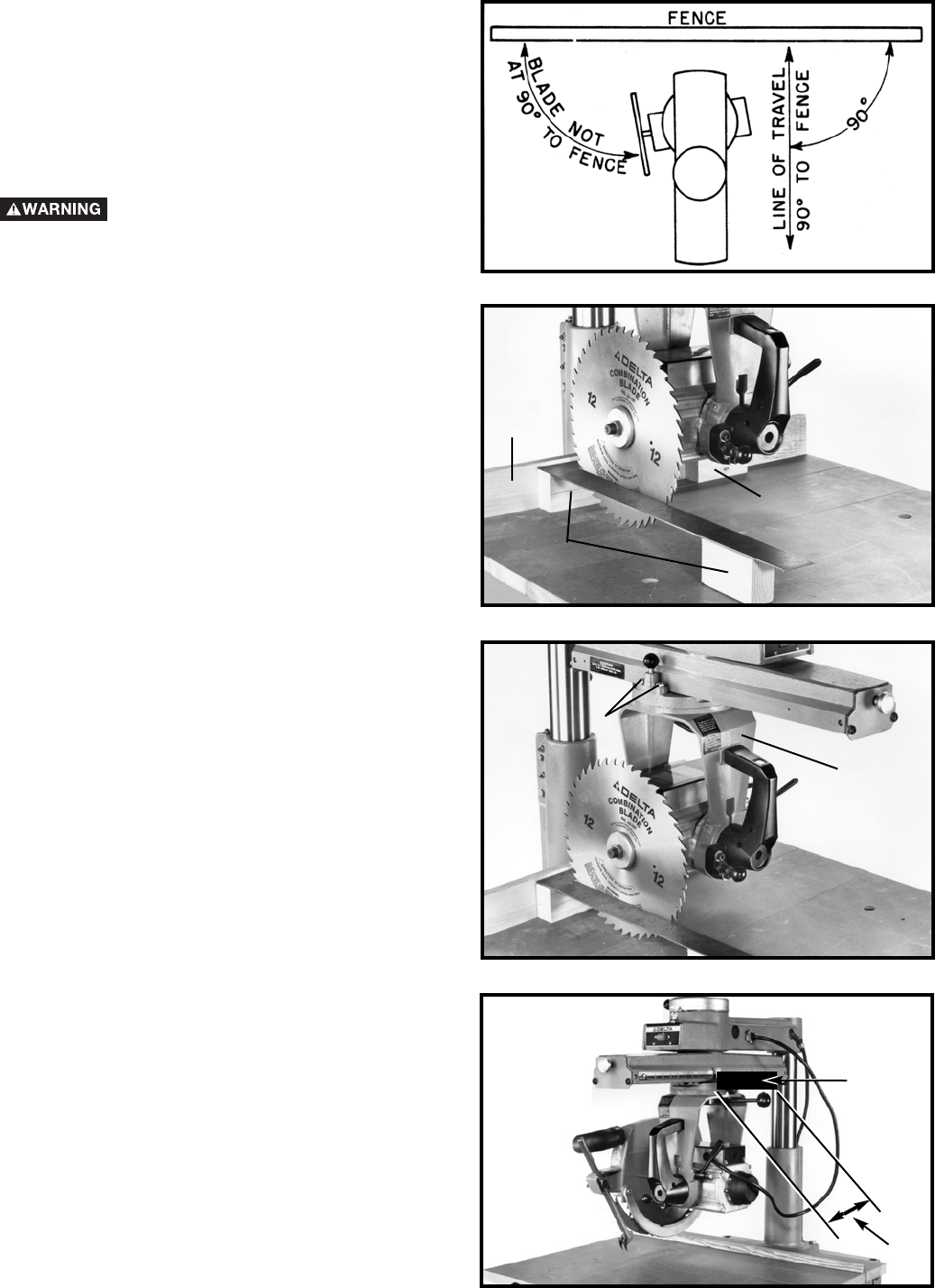
23
Fig. 54
Fig. 55
Fig. 56
REMOVING “HEELING” IN SAW CUT
Even though the cuttinghead travel may be perfectly
aligned at 90° to the fence, the blade itself may not be
90° or square with the fence, as shown in Fig. 54. This
condition is known as “heeling.”
To check and adjust, proceed as follows:
1. DISCONNECT MACHINE FROM
POWER SOURCE.
2. Take a piece of 3/4” plywood or similar piece of
wood (A) Fig. 55, at least 5” wide, and clamp it between
the table boards in place of the fence, as shown.
3. Using three 2 x 4’s four inches in height, as shown at
(B) Fig. 55, lay a square on the 2 x 4’s with one end of the
square against the plywood (A) and the other end against
the saw blade, as shown in Fig. 55.
4. If the blade is not parallel to the square, an
adjustment is necessary. Loosen yoke clamping handle
and the two screws (C) Fig. 56. Swivel the yoke (D) until
the saw blade is parallel with the square. Then tighten
yoke clamping handle and two screws (C) Fig. 56.
CROSS-CUT STOP
A block of wood placed at (B) Fig. 56A clamped to the
track arm with a small “C” clamp will prevent unnecessary
travel (T) of the cutting-head on the track arm. This is
especially useful when performing repetitive operations.
Clamp the block of wood to the right side of the track arm
at a position which will stop the cutting-head travel as
soon as the saw blade cuts through the workpiece.
A
B
B
D
C
Fig. 56A
B
T



